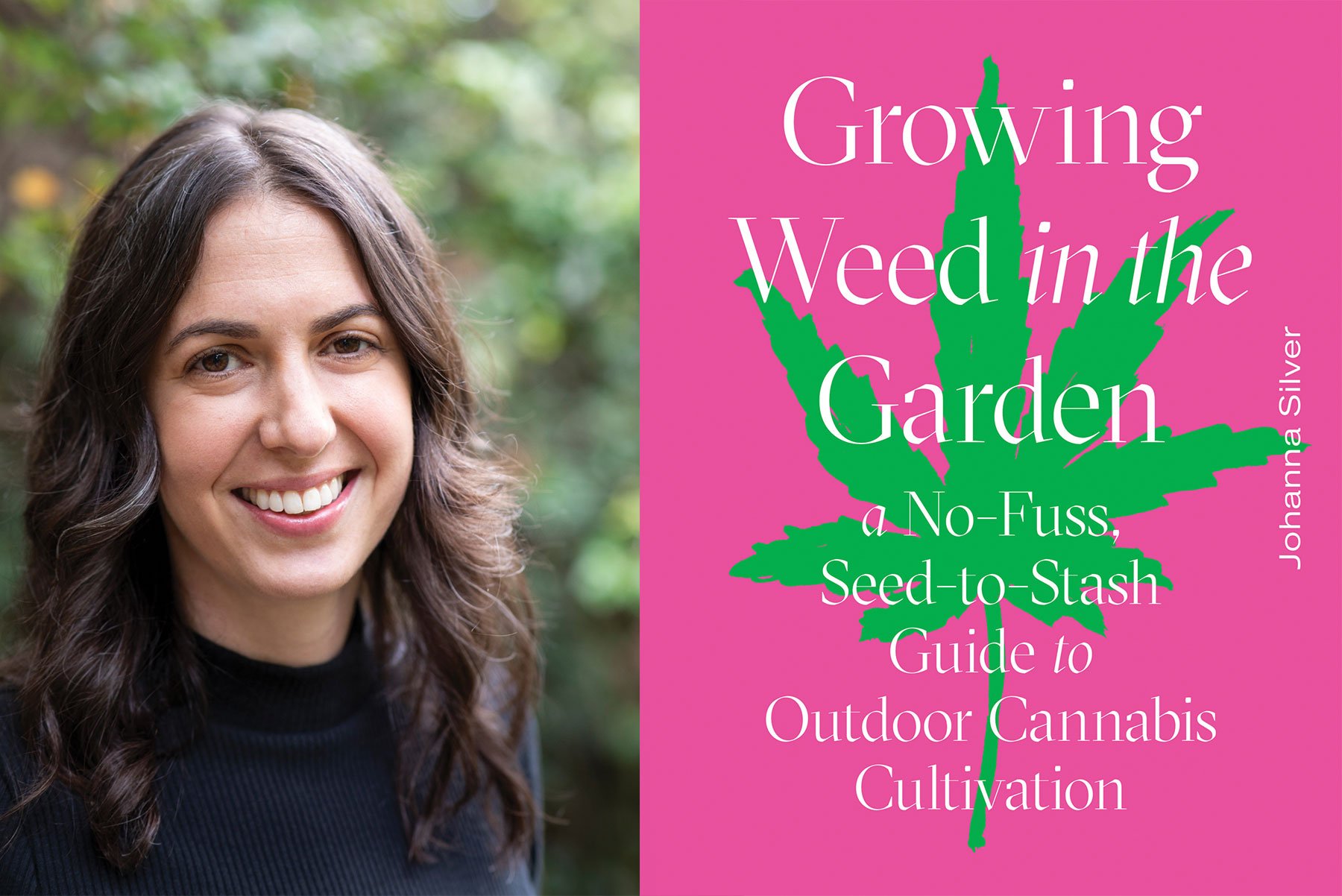
Johanna Silver’s Technique for Growing Weed in the Garden
To demystify a plant that’s experienced endless twists and turns in the nation’s legal system, former Garden Editor of Sunset magazine, Johanna Silver, digs into the world of home-grown cannabis cultivation in her book, Growing Weed in the Garden. Here we talk with Johanna about a grownup gardening lesson that’s sure to give you a green thumb with the plant, whether you call it weed, dro, chronic, Mary Jane or devil’s lettuce.
What got you interested in writing this book?
The San Francisco Chronicle asked me to grow weed in my backyard and document it from a gardener’s perspective. I knew absolutely nothing about the plant. I was a stoner in high school but those days are long gone. I didn’t even know where to get seeds! As I grew the plant, I came to understand there was a gaping hole in accessible, outdoor-only, garden-scale cultivation information that I wanted to look into.
What’s the easiest way to get started growing weed?
If you look online for resources, you’ll be overwhelmed by complicated growing techniques and that’s because they’re almost entirely geared toward indoor growing. This is a lot simpler outside. People can start from seed or clone and dispensaries are the only legal place to get either. I know seeds can be intimidating for people, but it’s actually so simple and you get a much stronger, resilient plant.
When is the best time to grow weed and what are the ideal planting conditions?
Cannabis is a warm-season annual so grow it anywhere you would a tomato. Give the plant full sun, a minimum of six hours in direct sunlight, along with rich soil and regular water. It’s best to give each plant 4 feet of room. Ideally, seeds are started in late spring or early summer. But if you’re getting a late start, look for an auto-flowering cultivar, one that will bloom independent of day length (other cultivars — the proper term for what’s commonly called “strain” — grow big and tall before summer solstice and then, as the days begin to shorten, form the flowers we smoke or eat).
How demanding is the plant?
It’s called weed for a reason! It’s not at all demanding and doesn’t hog water. It takes what you give it and I don’t give it anything more than compost at the start of the season. The demanding part comes after harvest because you need to hang branches to dry in a cool, dark room for about two weeks and then cut into smaller chunks to store.
What are some uses for weed in food and drink?
If you can eat or drink it, you can infuse it. You can go super classic and infuse coconut oil with cannabis and then use that oil to bake or drizzle on popcorn. I like making tincture (distilling cannabis in alcohol) and mixing small doses into tea.
If a person wants to incorporate cannabis into a food or drink but not become inebriated, how much should they include?
If they want NO psychoactive effects, there are a few choices — use a CBD cultivar with little to no THC. Alternatively, use the flower in its raw form (no heat) and that prevents it from becoming psychoactive. Unheated, THC is THCa, a different cannabinoid, one that doesn’t get you high but is thought to help with inflammation. Make a tincture of raw cannabis and see for yourself. The general advice is to start low and go slow. Unless it’s lab tested, you won’t know the actual THC content of your homemade goodies. A half-teaspoon is considered a conservative starting dose.
What’s your favorite recipe?
A smoothie!
1½ cups fresh fruit
¾ cup milk (dairy or non-dairy) 1 frozen banana
2 teaspoons infused oil
Know before your grow:
Paso Robles allows indoor cultivation of six cannabis plants for personal use but prohibits all outdoor cultivation.
Atascadero allows cultivation of six cannabis plants for personal use, indoors or outdoors.
Morro Bay permits cultivation of six cannabis plants for personal use indoors and up to two of those plants can be grown outdoors.
San Luis Obispo allows cultivation of six cannabis plants for personal use, indoors or outdoors.
Pismo Beach, Arroyo Grande and Grover Beach prohibit outdoor cultivation but permit six cannabis plants to be cultivated inside the home for personal use.
For residents in unincorporated areas of the county, six cannabis plants can be cultivated for personal use indoors but none can be grown outside.

